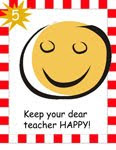Grades K-5 MUST have a backpack: Soft sided * no rollers * keep it as plain as possible.
If your child plans on bringing a lunch from home, use a soft-sided lunch box* no characters. Shop wisely – Supplies will need to be replenished in January. Buy extra now and save money. Please buy enough for homework supplies and keep all extra supplies at home. Below is the supply list for kindergarten for the first semester (August to end of December). In January, the supplies will change. You will be updated at kindergarten orientation.
Band-aids
3 pkgs Crayola large(chunky)
8-count crayons
4 writing tablets-Learn to Letter w/ raised ruling (Primary Writing-Stage3)
3 Oxford Spiral Index Card Books (3 x 5 or 4 x 6)
1 pkg of small Index Cards
1 watercolor paint kit (w/brush)
2 plastic 3 prong/pocket folders
2 plastic pocket folders (w/o prongs)
MEAD/FIVESTAR- 1, 3, or 5 subject spiral notebook (plastic cover)
1 bottle of white glue
2 pink pearl erasers
20 glue sticks
1 Fiskar scissors(blunt tip)
1 Clorox wipes (family size)-
2 bottles of Germ-x (large w/pump)
1 box tissues (family size)
Boys: 1 pkg of gallon size baggies
Girls: 2 pkg of quart size baggies
2 plain white t-shirts(your child’s size-name can go inside on tag)
Writing tablets-Learn to Letter w/ raised ruling (MUST BE Primary Writing-Stage3) (Walmart)





